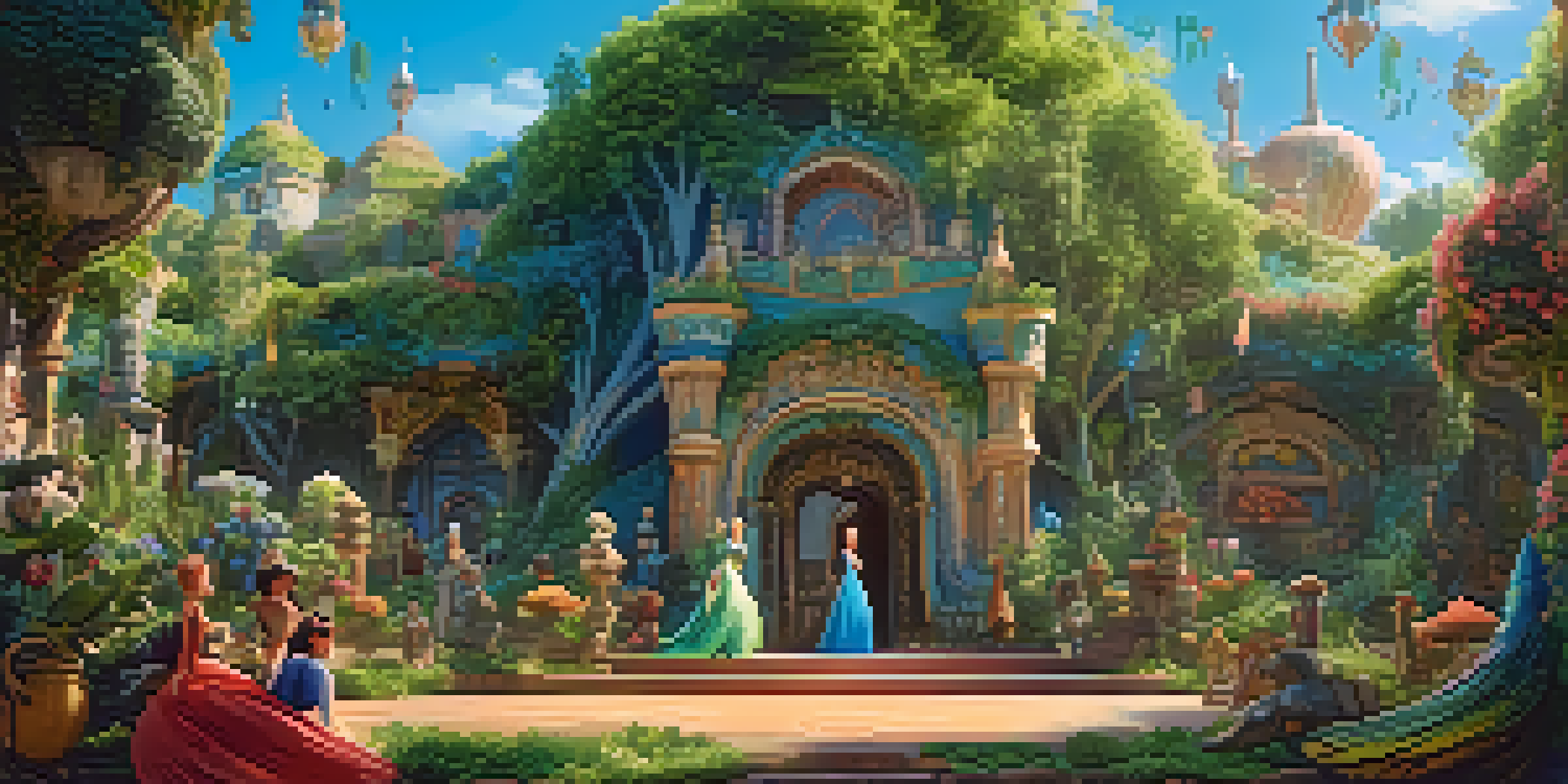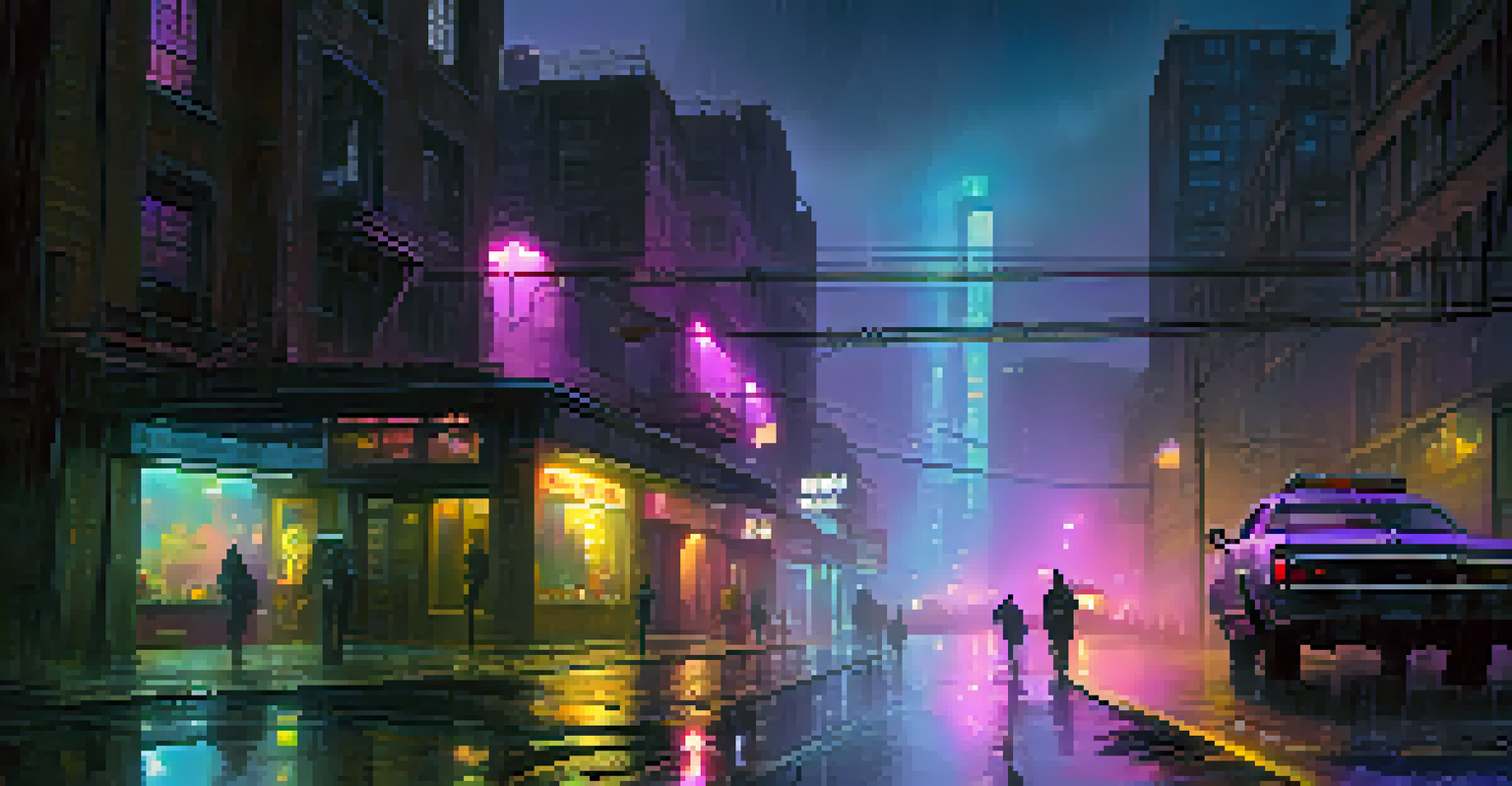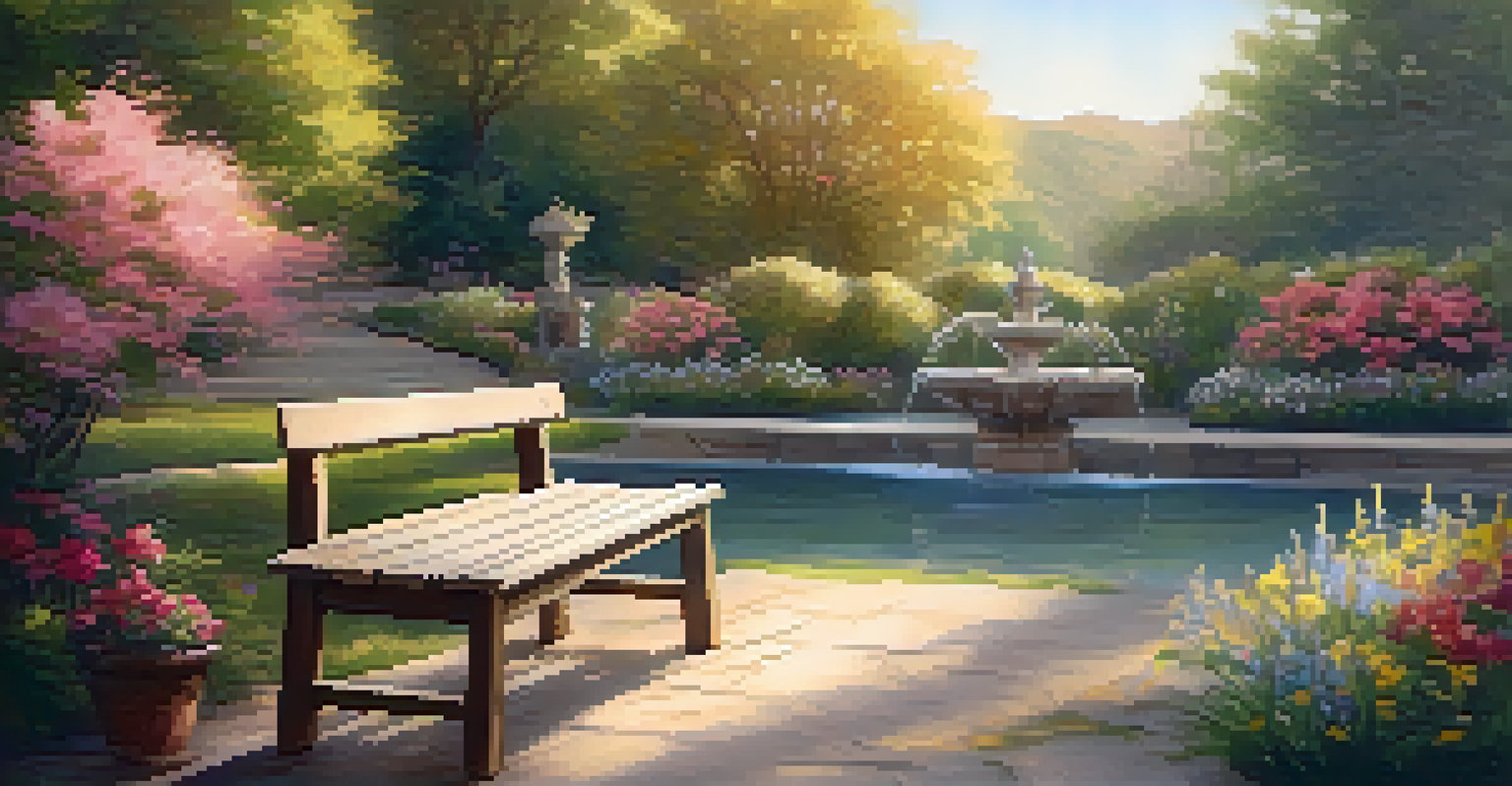The Importance of Art Direction in Shaping Film Aesthetics

Understanding Art Direction in Film
Art direction is a critical aspect of filmmaking that focuses on the visual style and overall aesthetic of a movie. It encompasses everything from set design to color palettes, ensuring that every visual element aligns with the film's narrative. Essentially, art direction sets the stage for the story, making it an indispensable part of the filmmaking process.
Art is the most beautiful of all lies.
Think of art direction as the paintbrush of a painter; it adds depth and meaning to the canvas of a film. Without a cohesive art direction, a film can feel disjointed or confusing, losing its emotional impact. The art director collaborates closely with the director and cinematographer to create a unified vision that brings the script to life.
For example, in a period drama, the art direction might involve recreating historical authenticity through props, costumes, and set designs. This attention to detail not only transports the audience into another era but also enhances the storytelling, making it more immersive and engaging.
The Art Director's Role in Visual Storytelling
The art director is responsible for translating the director's vision into a tangible visual experience. They oversee the creation of sets, props, and the overall look of the film, ensuring that every visual element serves a purpose. This role requires a keen eye for detail and an understanding of how visuals can evoke emotions and convey themes.

By working closely with the production designer, the art director helps to establish the film's mood and atmosphere. For instance, a horror film might utilize dark colors and eerie set designs to create a sense of dread, while a romantic comedy may feature bright, warm colors to evoke feelings of joy and love. This strategic use of visual elements is what makes art direction so powerful.
Art Direction Shapes Film Aesthetic
Art direction is crucial for establishing the visual style and emotional tone of a film, enhancing its narrative through cohesive design elements.
Moreover, the art director must consider the practical aspects of filmmaking, such as budget constraints and time limitations. Balancing artistic vision with these realities can be challenging, but a skilled art director can find creative solutions that enhance the film's aesthetics without compromising quality.
Color Theory and Its Impact on Film Aesthetics
Color theory plays a significant role in art direction, influencing how audiences perceive emotions and themes in a film. Different colors evoke different feelings; for example, red can signify passion or danger, while blue often conveys calmness or sadness. By strategically using color, art directors can guide the audience's emotional journey throughout the film.
Every film is a kind of visual storytelling, and art direction is the brush that paints that story.
Consider the film 'The Grand Budapest Hotel,' where the vibrant pinks and purples create a whimsical, dreamlike quality that complements the quirky narrative. This intentional color palette not only enhances the visual appeal but also reinforces the film's themes of nostalgia and adventure. Such thoughtful choices are the hallmark of effective art direction.
In addition, color can be used to symbolize character development or transitions within the story. A character might start in muted tones to reflect their emotional state, gradually shifting to brighter colors as they grow and evolve. This visual storytelling technique adds layers of meaning that enrich the viewer's experience.
Set Design: Creating Immersive Environments
Set design is a crucial component of art direction, as it provides the backdrop against which the story unfolds. A well-designed set not only looks visually appealing but also enhances the narrative by reflecting the characters' emotions and the film's themes. For instance, a cluttered, chaotic environment might mirror a character's inner turmoil, while a serene landscape can evoke peace and tranquility.
In films like 'Inception,' the innovative set designs create a surreal experience that aligns perfectly with the dreamlike narrative. The bending streets and gravity-defying structures are not just for visual spectacle; they serve to immerse the audience in the complex world of dreams, making the story more engaging.
Color Theory Guides Audience Emotion
Strategic use of color in art direction influences how viewers perceive emotions and themes, guiding their emotional journey throughout the film.
Moreover, set design involves extensive research and creativity, as it requires the art director to build environments that are both functional for filming and visually compelling. This process often includes collaborating with various departments, such as props and costumes, to ensure a cohesive aesthetic across the entire film.
The Influence of Art Direction on Cinematic Tone
Art direction significantly influences the overall tone of a film, shaping how audiences perceive the story. For example, a gritty, realistic art direction can create a sense of urgency and tension, while a stylized, colorful approach may evoke a sense of whimsy and fantasy. This tonal shift is essential for guiding the audience's emotional response and engagement with the film.
Take 'Blade Runner 2049' as an example, where the art direction blends dystopian themes with stunning visuals. The use of stark contrasts between light and shadow, along with a muted color palette, establishes a somber and reflective tone that mirrors the film's exploration of identity and existence. Such intentional choices elevate the storytelling experience.
Ultimately, the art direction helps create a world that resonates with viewers, drawing them deeper into the film's narrative. By carefully crafting the visual elements, art directors can manipulate the audience's mood and enhance their connection to the characters and story.
Art Direction's Role in Genre Definition
Art direction is instrumental in defining the genre of a film, as different genres have distinct visual styles that audiences expect. For instance, horror films often utilize dark, claustrophobic settings, while romantic films lean toward bright, airy environments. By adhering to these conventions, art directors can immediately set the tone and context for the story.
Consider the lush landscapes and ornate costumes in fantasy films like 'The Lord of the Rings.' The art direction not only creates a visually stunning world but also establishes the genre's fantastical elements, inviting viewers to suspend disbelief and immerse themselves in the narrative. This genre-specific art direction is vital for audience engagement.
Collaboration Enhances Visual Storytelling
Effective art direction results from collaboration among various departments, ensuring that all visual elements align to create a rich, immersive experience.
Additionally, breaking genre norms can also yield powerful results. A film that combines elements from multiple genres, like 'Get Out,' utilizes art direction to subvert expectations and create a unique viewing experience. The intentional choices made by the art director play a significant role in how the film is ultimately received.
Collaborative Efforts Between Departments
Art direction is not a solo endeavor; it thrives on collaboration between various departments in the filmmaking process. The art director works closely with the production designer, costume designer, and cinematographer to ensure that every visual element aligns with the film's vision. This teamwork is essential for creating a cohesive aesthetic that resonates with the audience.
For instance, the art department must coordinate with the costume department to ensure that the colors and styles of the costumes complement the sets. This attention to detail helps create a seamless visual experience that enhances the storytelling. When all departments work in harmony, the film’s aesthetic becomes richer and more engaging.

Moreover, collaboration extends to sound design and editing as well. The art direction can influence how sound is integrated into the film, with visual cues guiding the auditory experience. This interconnectedness highlights the importance of teamwork in achieving a successful final product that captivates viewers.